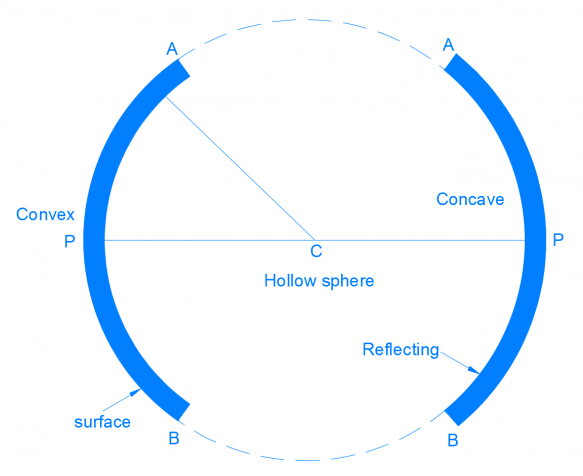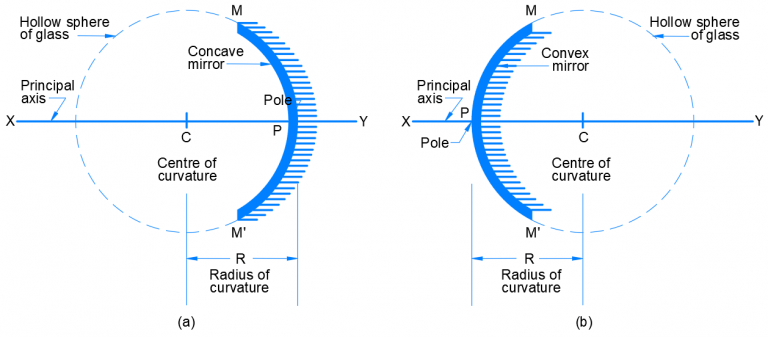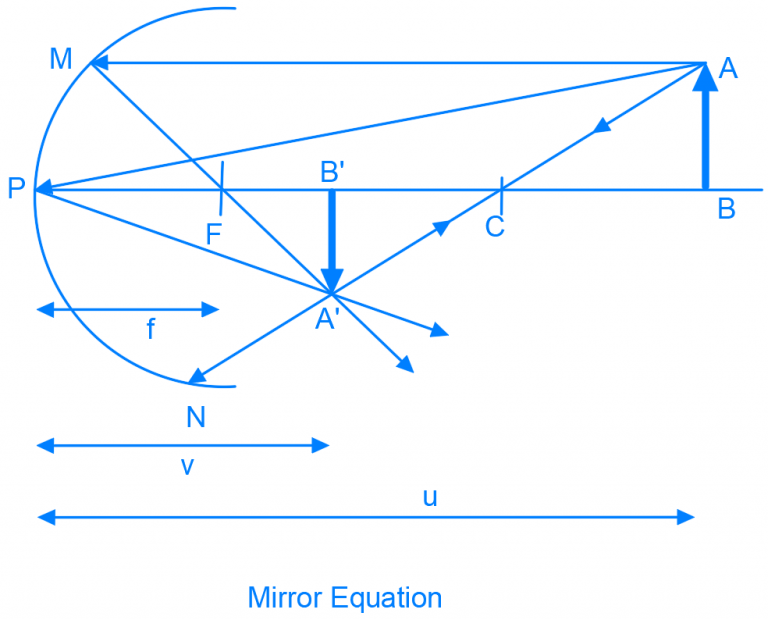Understanding the workings of spherical mirrors is critical for understanding how light behaves when reflected. This article delves into concave and convex mirrors, highlighting their unique properties and applications.
Spherical mirrors are divided into two types: concave mirrors and convex mirrors. Concave mirrors curve inward, converging parallel beams of light, whereas convex mirrors curve outward, causing parallel beams to diverge.

Spherical Mirror. Image Credit: Shanghai Optics
Key Terminologies:
- Center of Curvature (C): The hollow sphere’s center, which represents a critical point for comprehending the mirror’s behavior.
- Pole (P): The spherical mirror’s central point. This is different from the center of curvature.
- The radius of Curvature: The distance between the center of curvature and the pole.
- Principal Axis: A straight line from the pole and the center of the mirror.
- Focal Length (f): Half of the radius of curvature, defining the focusing ability of the mirror.

Pole of Spherical Mirrors. Image Credit: Shanghai Optics
Sign Conventions
Sign conventions are vital for deriving formulas for reflection and refraction by spherical mirrors and lenses. These conventions dictate that distances measured in the direction of the incident light are considered positive, while heights measured upward and perpendicular to the principal axis are also positive.
Mirror Equation
The mirror equation facilitates the generation of images using spherical mirrors. It links the object distance (u), image distance (v), and focal length (f), making it a useful tool for studying image formation.
Consider an item positioned at a distance ‘u’ from the mirror’s pole. Reflected beams converge to generate an inverted picture at a distance ‘v’ from the pole. The mirror equation, combined with diagrams, shows this phenomenon, which improves the comprehension of theoretical concepts.

Image Credit: Shanghai Optics
This guide provides a deep dive into the field of spherical mirrors, covering everything from fundamental concepts to practical applications. It equips readers with the information they need to comprehend and use spherical mirrors in a variety of real-world scenarios by demystifying key terminologies and equations.

This information has been sourced, reviewed and adapted from materials provided by Shanghai Optics.
For more information on this source, please visit Shanghai Optics.